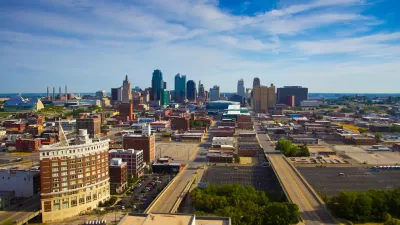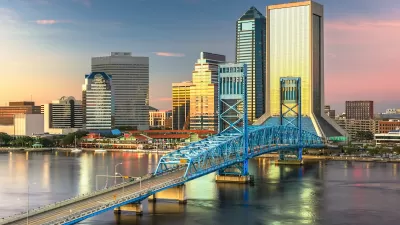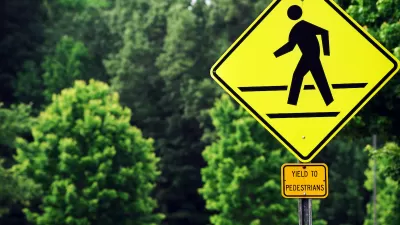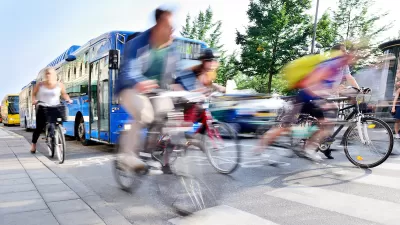The city aims to make its streets more walkable and reduce traffic violence by investing in sidewalks and other safety improvements.

Last month, Kansas City adopted a Vision Zero plan that pedestrian advocates hope will be a step toward making the city safer and more walkable. According to an article by Mili Mansaray for KCUR, “Residents complain about missing and poorly marked crosswalks and crumbling sidewalks.” The city’s walkability score, as defined by Walkscore.com, sits at 35 out of 100.
“We as a city, like most American cities, rely on design standards and other rules that do not prioritize pedestrians and other vulnerable road users,” said Michael Kelley, the policy director of BikeWalkKC. And, like other cities, Kansas City has seen a sharp rise in pedestrian deaths in the last decade, with communities of color disproportionately affected by traffic violence. “Smart Growth America reports that older adults were also struck and killed at much higher rates than other populations in 2020.”
Now, the city plans to implement more safety improvements and prioritize the communities that need them most through an $900 million infrastructure plan approved by voters in 2017, Go KC. “Through the Go KC bond program, the city will spend $7.5 million on sidewalks every year. Of that, $5.5 million will be used for sidewalks, and $2 million will be used on improvements to make streets safer for people with disabilities, such as curb ramps and colorful sidewalk bumps.”
Advocates are calling on the city to update its 2003 Walkability Plan and devote more resources to prioritizing pedestrians and other non-driving modes on the city’s roads and reconnecting communities cut off from resources by urban renewal projects.
FULL STORY: Can Kansas City park its cars and become more walkable?

Alabama: Trump Terminates Settlements for Black Communities Harmed By Raw Sewage
Trump deemed the landmark civil rights agreement “illegal DEI and environmental justice policy.”

Study: Maui’s Plan to Convert Vacation Rentals to Long-Term Housing Could Cause Nearly $1 Billion Economic Loss
The plan would reduce visitor accommodation by 25% resulting in 1,900 jobs lost.

Planetizen Federal Action Tracker
A weekly monitor of how Trump’s orders and actions are impacting planners and planning in America.

Waymo Gets Permission to Map SF’s Market Street
If allowed to operate on the traffic-restricted street, Waymo’s autonomous taxis would have a leg up over ride-hailing competitors — and counter the city’s efforts to grow bike and pedestrian on the thoroughfare.

Parklet Symposium Highlights the Success of Shared Spaces
Parklets got a boost during the Covid-19 pandemic, when the concept was translated to outdoor dining programs that offered restaurants a lifeline during the shutdown.

Federal Homelessness Agency Places Entire Staff on Leave
The U.S. Interagency Council on Homelessness is the only federal agency dedicated to preventing and ending homelessness.
Urban Design for Planners 1: Software Tools
This six-course series explores essential urban design concepts using open source software and equips planners with the tools they need to participate fully in the urban design process.
Planning for Universal Design
Learn the tools for implementing Universal Design in planning regulations.
Caltrans
Smith Gee Studio
Institute for Housing and Urban Development Studies (IHS)
City of Grandview
Harvard GSD Executive Education
Toledo-Lucas County Plan Commissions
Salt Lake City
NYU Wagner Graduate School of Public Service





























